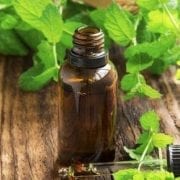Peppermint History – Exploring the Historical Roots
Peppermint is an aromatic flowering perennial that has a deep and winding history. There is no synthetic duplication for this natural-occurring plant that is used worldwide. The uses are as important today as they were thousands of years ago. Everything from piping in invigorating scents in Japanese factories to flavoring teas and candies, the scent and taste of peppermint has become a shared staple around the world. The history is rich and important in how peppermint is still used today in the natural order of things.
In The Beginning
It is believed that peppermint first originated in the Mediterranean and Northern Africa. As Egypt and Greece are in the same proximity, peppermint could easily have been indigenous to these countries, as well. Used as herbal medicine and in food preparation, the Egyptians valued peppermint to the point of using as currency and trade.
Peppermint has a high content of menthol which makes it distinguishable from all other mint species. This strong scent was used as a type of air freshener for embalmed bodies in Egypt. The leaves were chewed to calm down upset stomachs and to help eliminate pain from tooth decay. The flavor became a culinary favorite when added to sauces and wine.
Mythology
Ancient ancestors often believed in mythology for answers to health and well-being. The Greeks believed that the beauty of mint was created by the jealous wife of Pluto, Persephone. Pluto’s attraction to the divine spirit of mint angered Persephone so much that she turned mint into a crawling plant destined to the ground. Pluto was unable to reverse the spell, but was able to create a wonderful scent from the leaves each time it was trampled.
Early Documentation
It is difficult to pinpoint exactly when peppermint was first discovered. If you rely on records, cultivation was first documented in England in the 18th century. However, there is significant mention of peppermint way before then.
Roman scientist, Pliny the Elder, left journals that noted how peppermint stirred “the mind and appetite to a greedy desire of food”. His life span was AD 23 through AD 79. He further wrote of how Romans and Greeks flavored food and drink with peppermint.
Earlier still, an Egyptian medical text, dated 1550 BC, makes reference of how mint is used to calm stomach pains. Some scholars argue that this could have been a different type of mint since there are hundreds of species found within the Mentha genus. Spearmint, water mint and forest mint are among other common members.
There have been many arguments as to the authenticity of peppermint versus other varieties of mint. In 1753, Carl Linneaus, a Swedish botanist, determined that peppermint was a hybrid of spearmint and water mint. As believable as this theory may seem, cultivated M. piperita and dried leaves were discovered in ancient pyramids. Their existence at such an early date either means that the Greek had learned how to hybrid the shoots, or that peppermint has always been a separate species.
Introduction to the World
Peppermint is a fast-growing perennial plant that grows and spreads quickly. Once introduced to Asia, Europe and the Americas, cultivation took hold. The peppermint species seemed to split in characteristics upon introduction to different areas. For example, the United States is noted for cultivating black peppermint that has deep purple-green leaves and a high oil content. Europe raises white peppermint that has a milder flavor and light green leaves. The Japanese grow both varieties which are known as Mentha x piperita officinalis, white peppermint, and Mentha x piperita vulgaris, black peppermint.
The first documentation of peppermint in Europe was noted in 1682 by John Ray, an English naturalist. However, the plant was found to be growing wild in different parts of the country and was believed to have been native to Europe. In the United States, Michigan and New York are believed to be the first locations where peppermint was discovered and cultivated.
Commercial Cultivation
It is believed that the rich dark soils of Kalamazoo, Michigan, USA, and Surrey, England, are the finest for cultivating the highest degree of peppermint oils. Production in Europe began in 1750 and the United States in the early part of the 1800s. M. piperita is easy to grow in red or black soils that are well-draining and organic in matter. Most of the commercial cultivation of peppermint today can be found in Italy, USA, Japan and Great Britain.
Not much has changed since the original inception of peppermint except that it has become more embraced by the public. Today, peppermint oil is produced from the entire plant and is used in a variety of manufactured products, including:
- soap & shampoo
- cigarettes
- chewing gum
- ice cream
- tea
Known as the oldest medicinal oil in history, M. piperita still holds its place in the world for bringing great treatment for ailments such as indigestion, respiratory problems, headache, nausea, bowel spasms, fever and pain. Peppermint oil has also proven effective in aiding with nervous disorders and stimulating the mind. As early as the Middle Ages, peppermint was used by cheese makers to scare away rats and mice from their storerooms. This same remedy is used today in helping to control insects and small animals from invading crops.
The natural properties of peppermint proves how abundant the resources of the plant kingdom can be when examined and put into practice in every day living.






